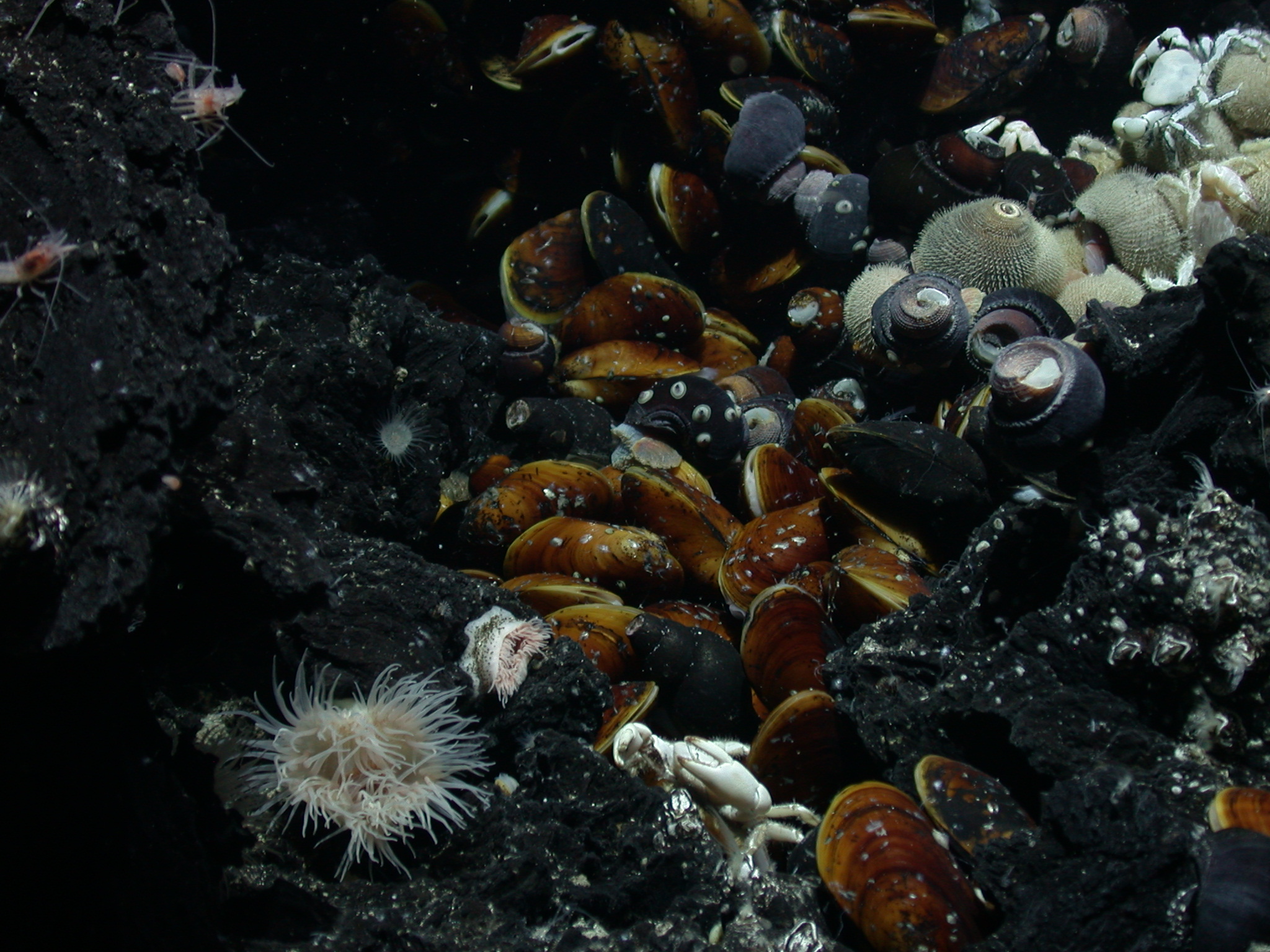

By Kyle Reynolds, Benthic Ecology Lab
Can you imagine being pregnant in your foot? That’s just one of the fascinating things I discovered about the snail species I studied for my thesis. I studied animals at hydrothermal vents (seafloor volcanoes) and the adaptations they’ve made that help them cope with their harsh environments. Specifically, I looked at two species of snails that live about 1.5 miles deep in the southwestern Pacific at a hydrothermal vent system near Tonga and Fiji.
These snails get as big as softballs when full-grown and have evolved many ways to deal with life in a chemically toxic volcanic world. My thesis focused mainly on reproductive adaptations, and I was able to find many of those. Not only have they wrapped their larvae in protective coatings, they also house them for a short time in a pouch in their foot! Like I said – pregnant in your foot!

This research was challenging on many levels. First, since I was studying something so far away from California and so deep in the ocean, I had only one chance to get the samples I needed and there was no guarantee they would be reproductively mature. With the expense of the research vessel, the submersible robot needed to collect samples at that depth, and the many crew members needed to run everything, these types of expeditions are much too costly to repeat. So I had one shot to get it right!
Also, I was studying animals that had very little previous research done on them (in fact, no one had ever studied their reproductive systems before) so I had very little guidance and often had no clue what I was doing! It took many visits with experts in many fields before I was able to piece the clues together and see the true picture of the bizarre mechanisms these animals were using to give their babies the best chance at survival.
For me, it was the challenge of this research that was most rewarding in the end. There is nothing like being the first person in the world to discover something! That’s what science is all about. More details to come on all of the crazy adaptations we found in these alien snails…

